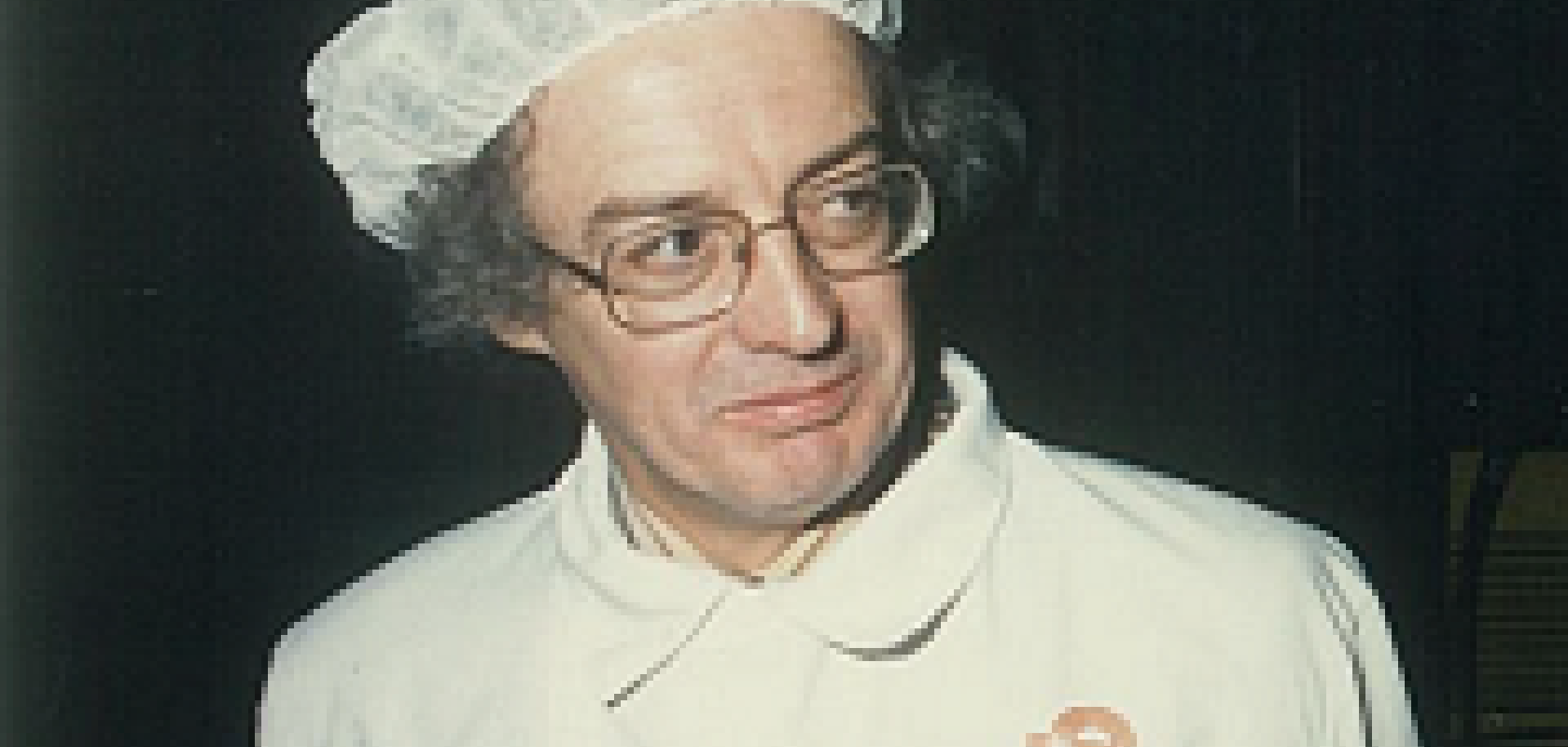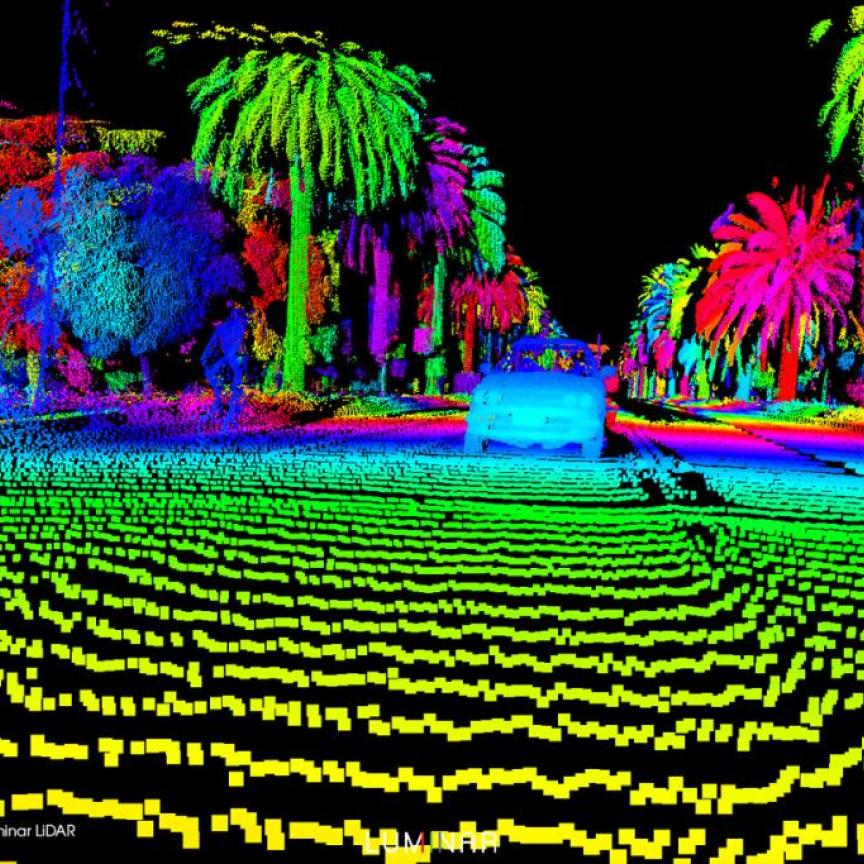Following the passing of Professor Bryan Tozer, a pioneer in laser safety and the founder of Lasermet, his son Paul Tozer looks back over his father's 50 years of working with lasers
My father was born in Merseyside, North West England, and graduated in physics at Liverpool University where he remained in order to do his PhD. At the time (mid 1950’s), the university had a linear particle accelerator, one of the largest particle accelerators in the world, which he used this for his research into plasma physics, producing his thesis entitled ‘An investigation into some electron impact phenomena’.
After a spell at Queen Mary University as a research fellow, he took a job as a research physicist at the Central Electricity Generating Board’s (CEGB) research laboratories in Leatherhead, Surrey in 1961, subsequently taking the opportunity of a two-year job swap to the National Research Council in Ottawa, Canada from 1966-68. At that time I was two years old, and my sister was four. I have vivid memories of our time in Canada, although these are mostly to do with snow and icicles!
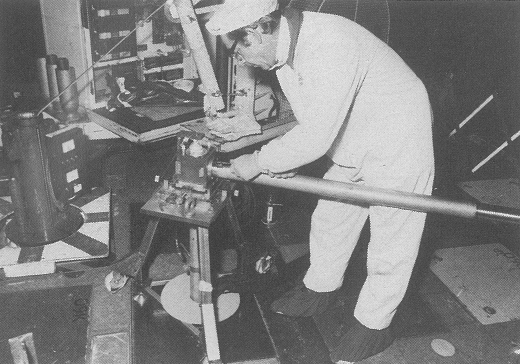
Holographic camera beam delivery adjustment
These were the very early days of lasers. Lasers and laser components were not readily available. My father’s research group was building a q-switched ruby laser and for this purpose he had to fly to Europe to pick up a ruby crystal and bring it back to Ottawa in his hand luggage, as the cost of the rod was about $10,000 and there was no other really secure way of shipping it. After construction had finished they fired the laser, focusing it in mid air. This had the effect of ionising the air, which caused a reflection that went back into the ruby rod and put a bubble in it – thus rendering it useless for lasing purposes. Since this all took place in about a nano-second, my father used to tell me that he was the world’s fastest spender, achieving a spending rate of $10 trillion per second – and in those days a trillion dollars was a lot of money!
On returning to the UK in 1968, he transferred to the CEGB’s Marchwood Engineering Laboratories (MEL) where he eventually became section head. The department carried out physics research into aspects of electricity power generation. Amongst other things they were in charge of investigating alternative energy sources for electricity generation, including wave power, geothermal and solar power (wind energy generation was dealt with elsewhere). These were very fledgling projects in comparison to nowadays. Nuclear power was many times more relevant as a non-carbon polluting source of electricity. However, it had been discovered that the original Magnox reactors, which were built in the UK during 50’s and 60’s, had a problem with an unforeseen cause of internal corrosion of the reactor wall. The CEGB needed a way of measuring the corrosion on the inside of a nuclear reactor and MEL was tasked with solving this problem. Since it was impossible to go inside the reactor, optical measurement techniques seemed to be the only solution.
My father and his colleagues therefore designed and built the Laser Corrosion Monitor. Put simply, this system fired a free running (pulsed) ruby laser with 0.25J, 250μs pulses into the inside reactor wall. Once the oxide layer had been ablated, which was determined by measuring the reflectivity of a HeNe laser from the metal surface, its thickness could be determined by counting the number of pulses that had been fired1. On a recent visit to the International Fusion Facility (ITER) near Marseille, I noticed the planned existence of an ‘Erosion Monitor’ laser system, to which I exclaimed ‘That’s what my father used to do!’.
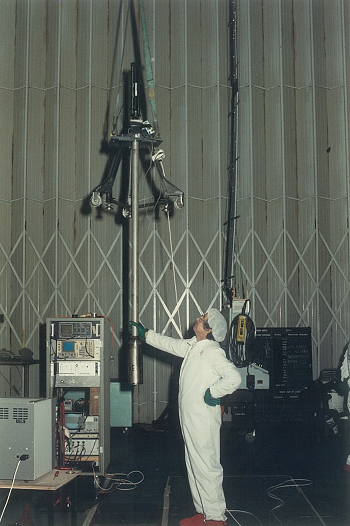
The Laser Corrosion Monitor developed by Professor Tozer and colleagues at marchwood Engineering Laboratories.
Optical techniques for remote inspection and measurement were particularly suited to the nuclear electricity industry and, for this purpose MEL also developed a holographic camera system. The biennial re-licensing procedure for nuclear reactors required an extensive visual inspection of critical parts of the reactor core, boiler and cooling circuits. Holograms offered a method of storing high resolution images with a very high depth of field, which offered much higher data storage than ordinary photographs or video. The system used a 1J pulsed ruby laser to produce the reference and subject beams. The laser itself was kept remote from the reactor for operational and size considerations, whilst the holocamera head was placed inside the reactor where it was typically subject to radiation fields of around 200rads per hour. Holograms produced in this way could later be used to make detailed photographs of the various parts of the reactor captured on the hologram. I can remember the hologram of used nuclear fuel rods which used to hang on the wall of our lounge in our New Forest home, despite the protests of my mother.
In the 1970’s and 1980’s the electricity-generating industry was becoming aware of the problem of harmful gas emissions from coal and oil fired stations, notably nitrogen dioxide, ozone and sulphur dioxide. The high chimney stacks of power stations and prevailing south westerly winds in the UK meant that the pollutants were carried across international borders. sulphur dioxide was of particular interest because it was known to cause ‘acid rain’, and SO2 emissions from the CEGB were blamed for causing deforestation in Scandinavia. A means of quantifying emissions from power stations was required, so MEL developed a lidar technique for the measurement of SO2 in power station plumes. This technique involved the use of a frequency doubled tunable dye laser and was able to detect concentrations down to 10ppb at a range of 2km.
Nowadays it is well understood that lasers can be hazardous, but in the early days this was not so well known. Bryan told me that one day, while watching a q-switched ND:YAG laser producing a spark in mid-air, he thought ‘what would happen if this beam was to hit someone in the eye?’. He became the laser safety officer (LSO) for the UK electricity industry and, in the days before personal computers, developed algorithms for classifying lasers and for assessing their safety. As LSO for the UK electricity industry he was appointed to the BSI EPL/76 committee, which was responsible for laser safety standards in the UK, and chaired this committee from 1985 until 2008.
With his background in applied physics research and electrical engineering, where complex physics is used to solve engineering problems in the real world, I know Bryan didn’t set out to become a leading expert in laser safety – he didn’t regard it as a real subject. Nonetheless, I think the diligence with which he approached his work just led him in that direction.
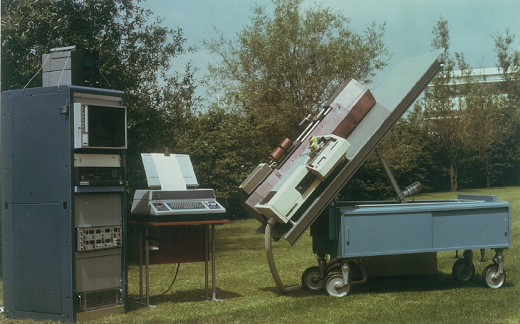
Professor Tozer and colleagues developed a lidar technique for quantifying emissions from power stations.
As chairmen of the BSI committee he naturally attended the European laser safety committee (Cenelec TC 76) to represent UK interests and became chairman of that as well, from 1993 to 2008. He also sat on the International Electrotechnical Commission (IEC) Laser Safety committee (IEC TC 76) throughout this time. These committees governed the Laser Safety Standards, BS EN 60825-1 – Safety of Laser Products, Equipment Classification and Requirements, EN 60825-1 and IEC 60825-1, respectively, as well as the entire suite of 60825-x standards. For a similar period of time he chaired working group 5 of IEC TC 76, which governed the formation and evolution of IEC 60825-2 – Safety of Laser Products and Safety of Optical Fibre Communication Systems. At one time there was talk of him becoming chairman of IEC TC 76 as well, but I think a clean sweep of the international and national committees would have been too much to deal with!
After taking early retirement from the CEGB in 1987, Bryan took up a position as a visiting Professor at City University London and also founded his company Lasermet with Dr Bill Fagan. Originally it was intended that the company would focus on laser measuring systems similar to those that Bryan had been developing at the CEGB. However, this failed to take off and after I joined the company in 1994 we increasingly focussed on utilising his growing international reputation in the field of laser safety. Initially this was focussed on training and consulting, which later developed into the founding of a UKAS-accredited testing laboratory for product testing to EN 60825-1 and associated standards, and then expanding into laser safety products and finally complete safety systems.
During the 1990’s and 2000’s there was a massive expansion in the applications and use of lasers in the fields of science, medicine, cosmetics, military and manufacturing. And wherever lasers were used, Bryan would get involved to assess the hazards and help the manufacturers and users comply with the standards, which meant that he gained a tremendously broad knowledge of the laser industry. From the rather unique problem of 532nm lasers that are scanned onto the retina to produce a high resolution image for ophthalmology, to 808nm lasers used for cosmetic hair removal, through 1,064nm military range finders with a 20km NOHD and 10kW fibre lasers used for cladding, welding and hardening applications.
By the time that ill health forced him to withdraw from active participation in the business, my father had seen the development of laser technology from its inception in the early 1960’s to the vast array of lasers and laser applications now available, over a period of 50 years.
Reference: 1B A Tozer, 1975. Physics in Technology 6 251

